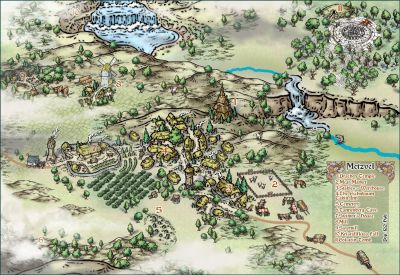
Monsen
Monsen
About
- Username
- Monsen
- Joined
- Visits
- 693
- Last Active
- Roles
- Administrator
- Points
- 8,940
- Birthday
- May 14, 1976
- Location
- Bergen, Norway
- Website
- https://atlas.monsen.cc
- Real Name
- Remy Monsen
- Rank
- Cartographer
- Badges
- 27
-
Wishlist for CC4
-
Community Atlas - Artemisia - Stromphe - Agora district
No, that's actually a very different issue (but somewhat also related to time). You may remember the old version of vanilla used whispers embedded in the discussions themselves, a feature not available in this version. But those whispers caused the read counts for those threads to be off when they were removed from the discussion and turned into PM's during the upgrade process to this version of vanilla. It affects all discussions that contained whispers, but it works itself out for active discussions as people continue posting in them.
-
Wishlist for CC4
One of the main advantages with 64-bit is getting rid of the memory constraint. As a 32-bit program, CC3+ can only address up to 4GB of memory, but with 64-bit it would be able to use all the memory in you machine, no matter how beefy, for a long time to come.
There are other advantages as well, but for CC3+ that is the biggest advantage.
-
After Print - Zoom to extents shows blank white screen.
There's no direct way to find them, I do it by a bit of structured trial and error. I start by figuring out which sheet contains the problematic entities by hiding half of them, figuring out if the problem still persist, if not, it is on one of the hidden sheets, if it continues, it is on the still visible ones. Continuing that way until I am down to one sheet (Takes more effort to write that explanation than actual do it in practice)
Since there where quite a lot of entities on that sheet, I narrowed it further by hiding layers. Could have used the same approach, but I found it faster to do a list of all the entities on the sheet to figure out which layers were involved, and then tested those 1 by one.
This lead me to the SYMBOLS sheet and FURNITURE layer if my mind serves me correctly.
Still a bunch of visible entities, so I just proceeded erasing a good bunch of them at a time, retrying between each batch. Turns out that the problem still persisted after deleting all visible entities. And that makes it easy to find the culprits, since the last step is now just doing a info -> list, then hit a (or right click o get the selection menu and select all) and do it. And voila, the list command shows me the culprits.
I have no idea why these corrupted entities show up in the first place. I've never had that happen to me personally, but maps with corrupted entities like that do show up in the forums every now and then. And this also brings up the point why it is so difficult to fix those bugs, they're nearly impossible to reproduce. A corrupted map posted by a user don't show how it happened, and the developers struggle to reproduce it so they can find and fix the issues. I don't find anything familiar with the way you describe CC3+ yourself. Granted, I have experienced crashes every now and then, but it's not something that happens often. And my maps have never corrupted.
-
Community Atlas - Artemisia - Stromphe - Agora district
Necro is applied when someone posts after a thread have been dead for more than a year. It serves to tell others that this is a very old thread and just to keep an extra eye out for irregularities, such as spammers, as many love to post on old cases. The necro flag should go away after five or so new posts, indicating that the discussion is active again.









